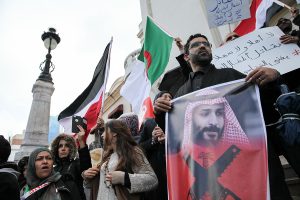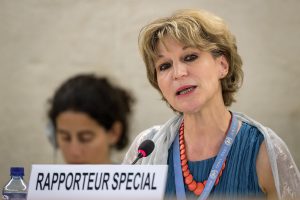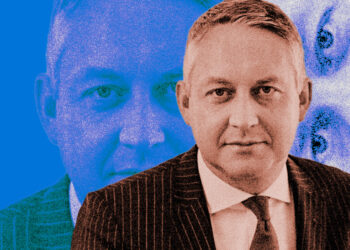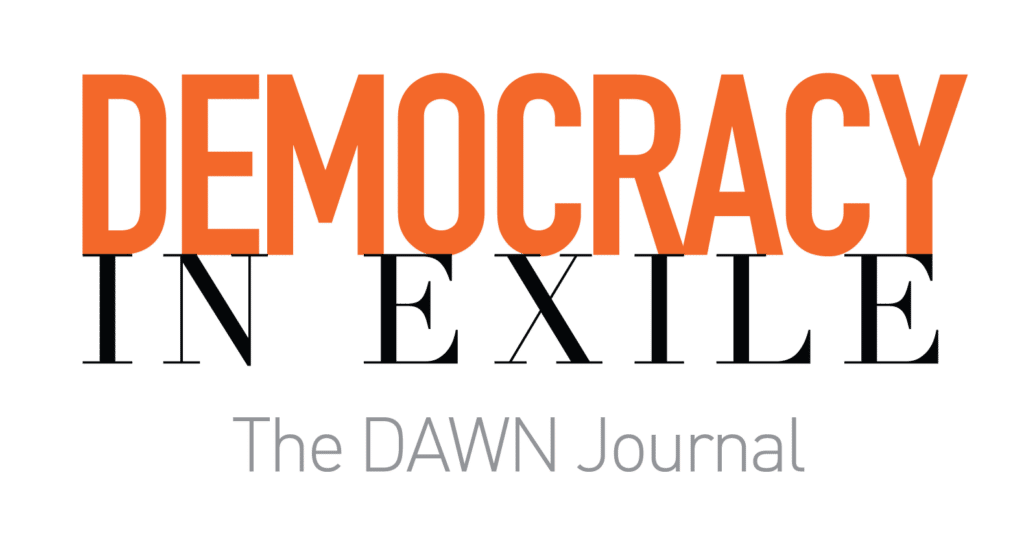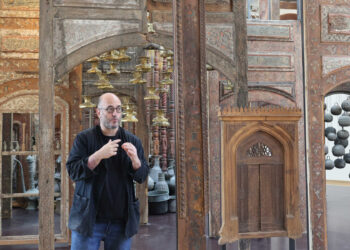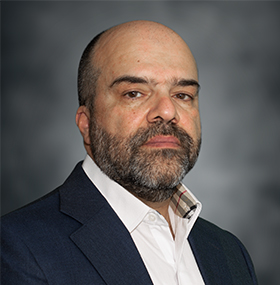Arie Amaya-Akkermans is a writer, art critic and independent researcher based in Italy. His work focuses on the history of archaeology, contemporary art and the politics of memory in the Middle East.
In the weeks since a fragile cease-fire has held in Lebanon, despite dozens of reported Israeli violations, the mood in Beirut has constantly shifted between cautious optimism, uncertainty and hesitation. The rapid fall of President Bashar al-Assad in neighboring Syria has now added to Lebanon's state of flux, with the shadow of a regime that hung over Lebanese politics for decades now suddenly gone.
For Lebanon, these periods of intense upheaval are often also fleeting moments of vibrancy, when seemingly impossible possibilities can become actualized, even if only temporarily. Beirut, still in many ways a thriving cultural and artistic capital, has been full of announcements for the reopening of cultural institutions that until a few weeks ago seemed unthinkable amid such heavy Israeli bombardment. The Sursock Museum, the country's leading collection of modern and contemporary art, which is housed in a historic mansion that was damaged in the 2020 port explosion, abruptly closed its doors in October for the fifth time in its history, storing away its collections. Last week, the museum unexpectedly reopened to the public with a vibrant program.
The Beirut Art Center, a cultural institution that became a hub for donations during Israel's bombing campaign, providing relief to families across Lebanon and bringing art to those displaced in shelters, also announced that it would reopen in the coming weeks. It unveiled a new program, quoting the words of the famous Syrian playwright Saadallah Wannous: "We find ourselves doomed by hope." The Metropolis Cinema, which was shuttered early in 2020 to the dismay of Beirut's vibrant arts and culture community, also reopened its doors last week. It is now housed in a large new space in the Mar Mikhael neighborhood across from the devastated port. The opening was scheduled initially for October, but the intensity of the Israeli assault forced another delay. The opening program featured films by Lebanese artists Rania Stephan, Vartan Avakian, Cynthia Zaven, Rana Eid, and the duo Joana Hadjithomas and Khalil Joreige.

That wasn't the only grand opening in Beirut that was delayed. The Nuhad es-Said Pavilion for Culture, an annex to the National Museum of Beirut, a decade-long project of the country's National Heritage Foundation, was scheduled to open to the public on September 19. The official inauguration, set for September 18, was indefinitely postponed, as it came the day of the infamous pager explosions across Lebanon, which killed at least 32 people, including two children, and seriously injured many thousands more.
When the war of attrition between Israel and Hezbollah along the border erupted this fall into a full-on Israeli war in Lebanon, cultural life in Beirut abruptly shut down, a pattern the city's artists and institutions have been familiar with since the civil war. Yet as always in Beirut, the story was also more complex than just closure.
Under Israeli bombardment, cultural life in Beirut abruptly shut down, a pattern the city's artists and institutions have been familiar with since the civil war. Yet as always in Beirut, the story was also more complex than just closure.
- Arie Amaya-Akkermans
Art dealer Saleh Barakat, a fixture in the city since 1990, said that his gallery was actually closed only during the first week of Israeli bombing, but then it reopened gradually. "Actually there were a lot of people who called us to visit the gallery and said they wanted a change of air," he told me. The gallery became a meeting place, rather than just a space for art. "Artists, collectors and other people in the artistic community, we were concerned about the war and the gallery became a place where people would come to discuss and share," Barakat said.
Although the formal opening was postponed, the National Museum of Beirut and its new annex remained open throughout the weeks of relentless Israeli bombardment. The inaugural exhibition at the new Nuhad es-Said Pavilion, titled "Portals and Pathways: A Journey Through Reality and Imagination," was curated by the Beirut Museum of Art, or BeMA, a new museum that has been in development for many years, with a mission to preserve Lebanese heritage and culture through modern and contemporary art. Juliana Khalaf, BeMA's co-director, said that while the ceremony to open the new pavilion "was understandably canceled, the Nuhad Es-Said Pavilion and BeMa remained unwavering in their commitment to keeping the space open."
"Even amid such extraordinary adversity, we honored our promise to offer sanctuary—a place where shared heritage and collective imagination could defy the silencing grip of violence," Khalaf said. The exhibition is a multigenerational showcase of Lebanese art, including modernist pioneers such as Saloua Raouda Choucair, Yvette Achkar, Jean Khalife and the painter Samia Osseiran Jumblatt, who died at 80 earlier this month. Established artists such as Lamia Joreige and Fouad El Khoury are shown alongside younger artists like Alfred Tarazi, Danielle Genadry and Rayyane Tabet. While BeMA is both a private NGO and future museum with a new building set to rise near the National Museum, it is also the official caretaker of Lebanon's national collection of modern art, many works from which have never been shown to the public before.

Alfred Tarazi's large-scale installation, "Hymne a L'Amour," draws on a large collection of wood and copper work produced and collected by his family across generations, a dynasty of artisans that originated in Syria. They are famous for the ornate panels and interiors known from reconstructions on display at the Metropolitan Museum of Art in New York, the Dresden State Museums and the Museum of Islamic Art in Berlin, among other institutions beyond Lebanon. The installation is a timely document not only of his own family history and the history of craftsmanship in Lebanon, but also of the problematic status of Islamic art in modern-day Lebanon, where museology has focused only on antiquities and modern or contemporary art, leaving a crucial gap in the country's cultural history.
"Is this work Syrian, Lebanese or Islamic?," Tarazi asked rhetorically during an interview. He pointed out that even during the era of Beirut's feverish postwar reconstruction in the 1990s, under Prime Minister Rafik Hariri, a museum of Islamic art was never built. He had another question, thinking of the European colonial museology that has effectively closed off the temporality of Levantine artisanship, as if its historical continuity had ended forever: "How do you preserve heritage in a way that you keep it alive?"
It is a question that has taken on new relevance after the collapse of Bashar al-Assad's regime in Syria. Among the many challenges in Syria after Assad is the disentanglement of archaeological and historical museums and archives from the nostalgic, selective and atemporal cultural narrative of an authoritarian state.

Underlying the optimism that comes with the reopening of cultural institutions in Lebanon and the possibilities for a new wave of reconstruction in both Lebanon and Syria, there's also tremendous grief and uncertainty. In the last hours of November 26, just before hour zero of the cease-fire taking hold, the parents of Lebanese artist Ali Cherri were killed in an Israeli airstrike, amid a day of heavy bombardment. Cherri, a video and installation artist based in Paris, was scheduled to open a new exhibition in Vienna at the prestigious Secession Building, on December 6. The Vienna Secession posted a message on their social media accounts: "The artist will not be present, because both of his parents were killed in an air attack on Beirut by the Israeli military." A number of institutions and organizations posted messages of condolence for Cherri online—perhaps a belated gesture, considering the silence of many arts organizations in the face of genocide in Gaza and mass destruction in Lebanon.
Cherri's multidisciplinary practice, spanning film, sculpture and drawing, has in the last decade explored the history of colonial archaeology and specifically the figure of mud, a material from which myths, grand narratives and creation stories have been formed in some of the oldest art in human history. For Cherri, the mud is a material both strong and fragile, pointing at the eventual dissolution of power structures that seem permanent, a case in point now unfolding suddenly in Syria. In a recent intervention, "Returning the Gaze," at the Egyptian Museum in Turin, a collection of ancient Egyptian artifacts founded back in 1824, Cherri put polished bronze prosthetic eyes on ancient statues and sarcophagi that had been damaged or deliberately vandalized when they were excavated or looted during the colonial era. These seven artifacts are now imbued with a gaze that once had been lost.
Art and culture in Lebanon have always been a testament to our steadfastness. In times of destruction, art and culture remind us of who we are and what we can overcome.
- Juliana Khalaf, co-director of the Beirut Museum of Art
The regained gaze is a powerful metaphor for this present moment of extreme violence from Lebanon to Gaza, when in spite of the political maneuvering to cover up war crimes, it is impossible for us not to see in broad daylight the reality of genocide, annihilation and conquest. And now, after Syria's liberation from Assad, we stand in front of the abyss, in the face of the gruesome testimonies coming out of Syrian prisons, while tens of thousands are still missing and feared dead.
"The problem with the cease-fire," Saleh Barakat said, "is that it is a 60-day period, and if anything goes wrong, the war might come back, so it is nothing like a period of stability." But he insists that 2025 promises to be one of the most ambitious years in the history of his Beirut gallery.
In the middle of November, artist Gregory Buchakjian and illustrator Michèle Standjofski, professors at ALBA, the Lebanese Academy of Fine Arts, asked a number of poignant questions on social media: "How to teach under the bombs? How to handle the fear and exhaustion of those who haven't slept at night? How to listen to those who have lost their homes, their villages, loved ones, their memories? How to support those who find themselves nineteen people in a 60-square meter space because they accommodate their displaced families? How to make the campus a safe space physically, emotionally, and intellectually?" ALBA was one of the few universities that remained fully operational on campus while also teaching hybrid, for students who had left the country or lived in dangerous areas under Israeli bombardment. "I was very proud we managed to work," Buchakjian said, "and perhaps because studying was therapeutic, the students delivered excellent work."
"Art and culture in Lebanon have always been a testament to our steadfastness," Juliana Khalaf said with cautious optimism. "Despite wars, economic collapse, and the ongoing Syrian crisis, they endure as powerful tools for rebuilding and healing. In times of destruction, art and culture remind us of who we are and what we can overcome."









